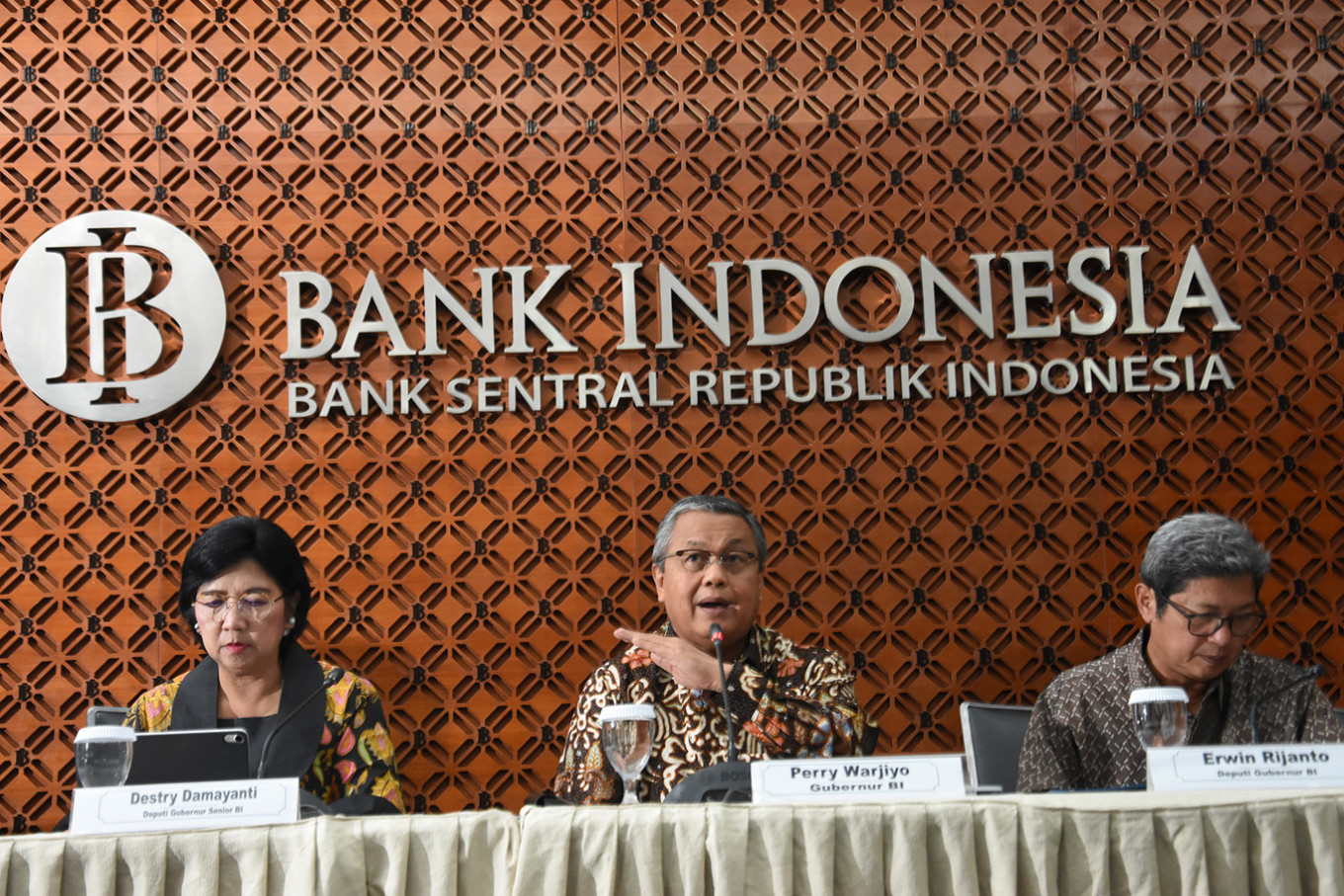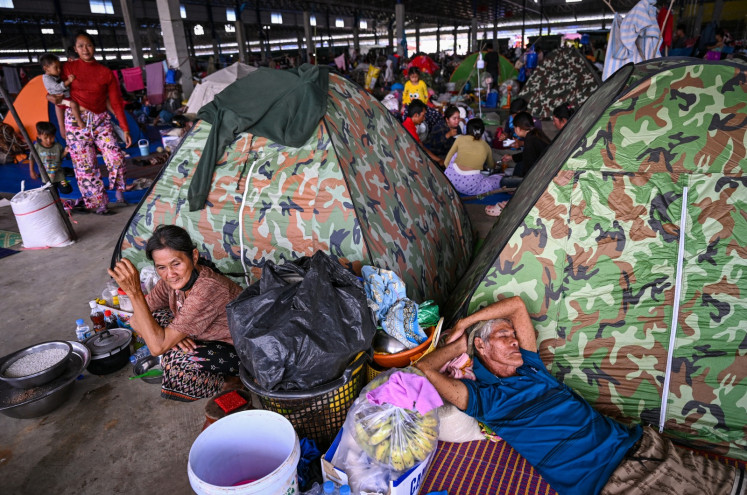Popular Reads
Top Results
Can't find what you're looking for?
View all search resultsPopular Reads
Top Results
Can't find what you're looking for?
View all search resultsCovidnomics: New normal?
Economically speaking, we might leave the current dynamics in an “abnormal” category. In contrast, we must pursue a normally functioning economy that enables the domestic macro economy to achieve sustainable growth. This awareness could prevent us from losing focus. Moreover, the recognition of the new normal might inherently constrain the economy even further.
Change text size
Gift Premium Articles
to Anyone
T
he COVID-19 pandemic has caused a sharp economic downturn globally, as indicated by deeper government deficits, slower growth and higher unemployment. Even though the coronavirus will likely be carried over to the second half of 2020, many governments have begun to ease social restrictions with an elaborate set of health protocols. The real sector-economy might begin to crawl from the darkness to revive but will this be the so-called “new normal”?
There is always a dilemma in public policy choices. Similarly, the economy is always facing trade-offs. There is no economic growth without inflation just as there is no gain without risk. The government and authorities ought to respond proportionally. The important point is to strike the balance between risk and opportunity.
While it is urgent to “flatten the curve” of the virus spread, another equally important issue for most governments in the world is on how to resurrect growth. President Joko “Jokowi” Widodo has issued Government Regulation No.23/2020 to step up the economic recovery. On the macro stability front, Bank Indonesia (BI) continues to readily counteract the dynamics.
Economic recovery in Indonesia is being pursued by multiple authorities. BI is tasked with prudently sustaining bank liquidity through quantitative easing. The Finance Ministry’s job is to stimulate the real sector. The Financial Services Authority (OJK) is focusing on monitoring credit restructuring.
Coordination is the prerequisite for fast economic recovery. BI as the monetary authority does not have direct access to the real sector, whereas the Finance Ministry has recently been constrained by deficits. To bridge those idiosyncratic features, a “joint venture” between monetary and fiscal policy is effectuated as a pandemic-specific approach. In normal conditions, it would be unlikely that this approach would be taken because of the unintended consequences to be paid by the economy.
During the pandemic, BI can buy government bonds (SBNs) from the primary market according to Law No.2/2020. To support the government’s stimulus on regular expenditure (“above the line”), BI follows the market mechanism as a dealer of last resort. Similarly, BI will contribute to supporting government finances for the banking-restructuring program (“below the line”).
But first, banks are directed to engage in SBN repurchase transactions (repo) with BI to finance their restructuring programs. After SBNs in a bank’s portfolio hit 6 percent of demand deposit, the government can kick in. The burden is then shared between the government and BI with highly calculated risk mitigation. Again, this multi-tiered approach ought to be deemed a pandemic-specific approach.
For most macroeconomics disciples, the step toward a new normal identification should be examined carefully. Economic equilibrium is usually achieved over a long period before it is eventually stable. The result is whether the economy can live along with the new equilibrium or otherwise return to its original state. In reality, multiple equilibria often exist, thereby raising the complexity.
Before the 2008 financial crash, Wall Street capitalists had blatantly labeled their over-leveraging of junk-debt instruments as a new normal. The result was not quite normal. Financial bubbles burst. Then, it required a high-cost recovery with an equally high probability of sustained damage. If society wants to label today’s conditions as the new normal, it has to be done in the most selective possible way.
COVID-19 is also deeply affecting socio-anthropology through limited social mobility and new health protocols. Surprisingly, none is constraining social interactions thanks to state-of-the-art technology. Today’s digital-interaction trend boosts efficiencies. This should be sustainably applied even after the pandemic. This is likely to happen for digital payments since there already exists the Indonesia Payment Systems (SPI) Blueprint 2025. Beyond the SPI blueprint, BI continues to accelerate cashless payments, which enable ease of transactions even during the pandemic.
Economically speaking, we might leave the current dynamics in an “abnormal” category. In contrast, we must pursue a normally functioning economy that enables the domestic macro economy to achieve sustainable growth. This awareness could prevent us from losing focus. Moreover, the recognition of the new normal might inherently constrain the economy even further.
A better expression should be the pursuit of “back to normal”. Priority should be on restoring the pre-pandemic economy. When the point of recovery is reached, then we might start to think of improvement. One step at the time.
Some of the approaches adopted during the pandemic might be worth maintaining, such as the digital culture and “care-for-others” society, which potentially generate efficiencies at another level.
Some extraordinary measures undertaken during the pandemic might only be suitable in confronting COVID-19 and not for a pandemic-free economy. Otherwise, it might be similar to somebody who uses a sledgehammer to crack a nut. Macroeconomic lessons learned should include stronger coordination and more effective economic leadership. All else must be scrutinized proportionally. Most importantly, the new normal trend must not obscure the ultimate goal of eradicating COVID-19 and all its socio-economic negative impacts.
While COVID-19 will be priceless history to which the next generation can refer, we might rethink the path to the new normal. The economic paradigm needs to stay in the area that recognizes the recent dynamics as beyond normal. Redefining their dynamics, in the pursuit of sustained stability, should be the objective.
***
The writer is staff member in the legal affairs department, Bank Indonesia. The views expressed are his own.










